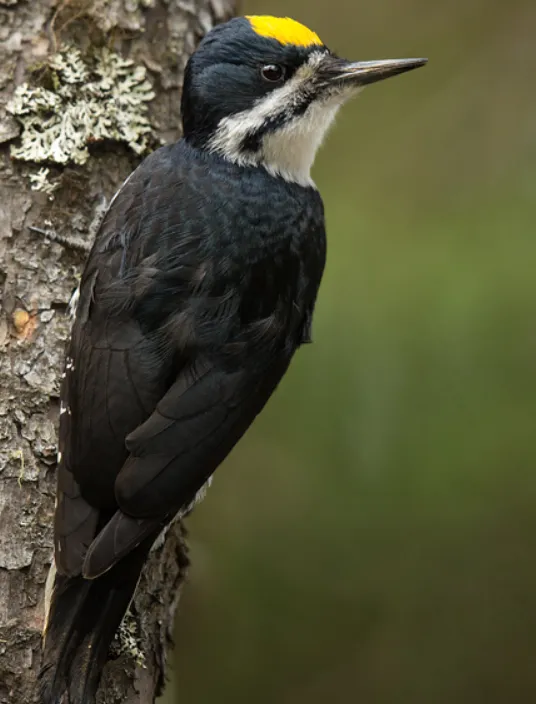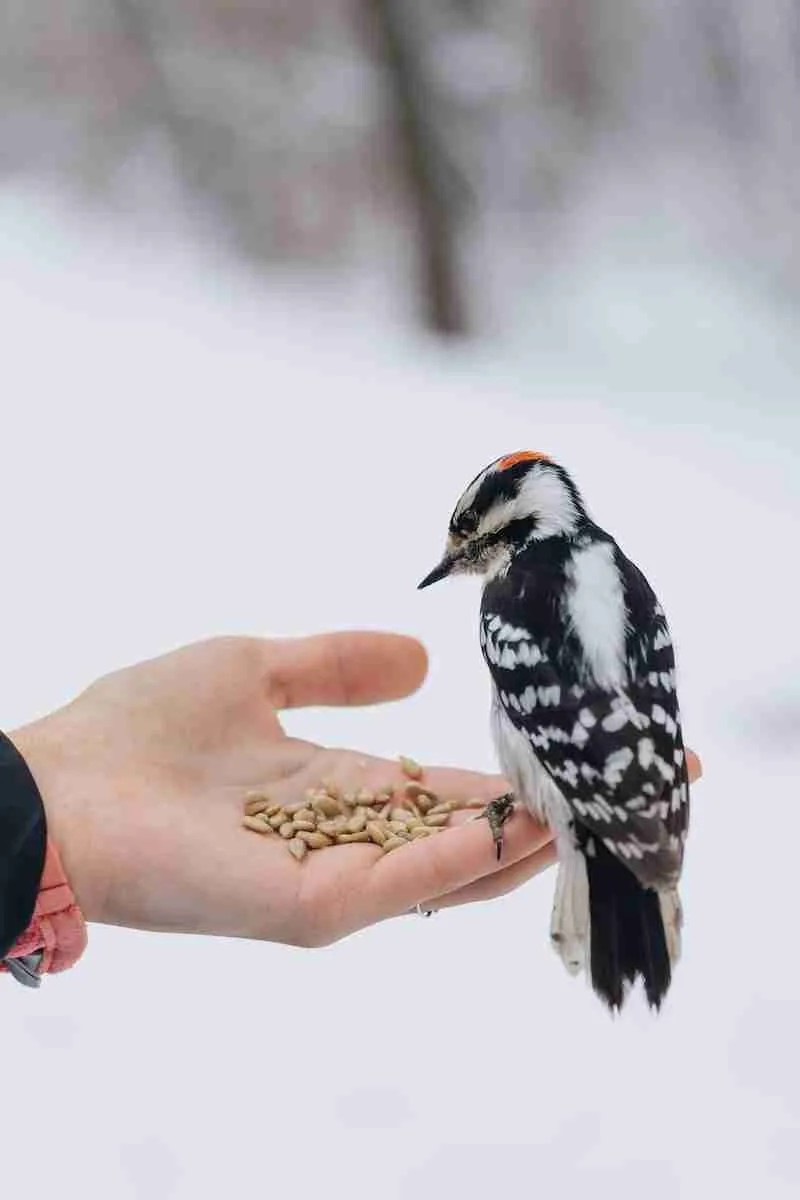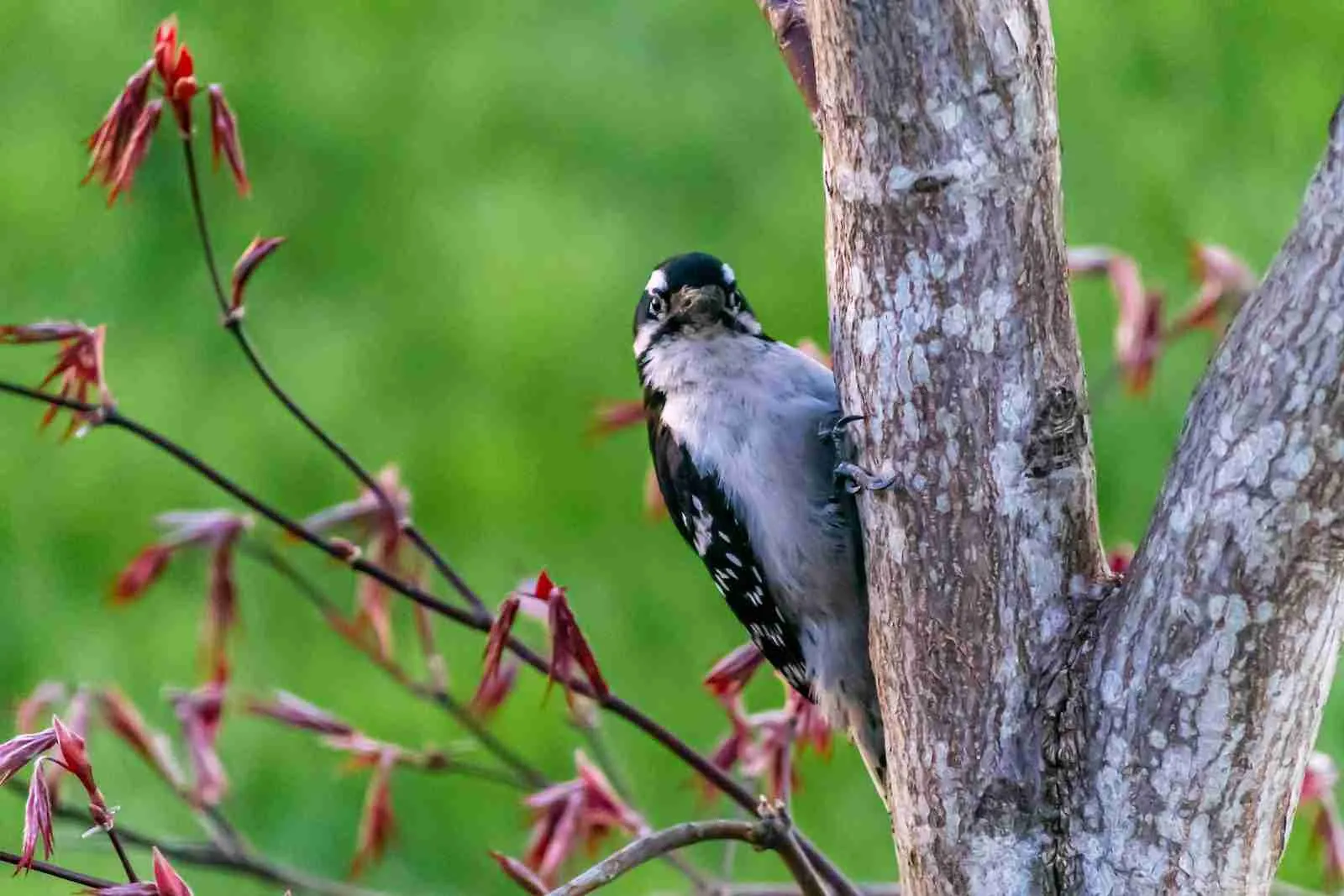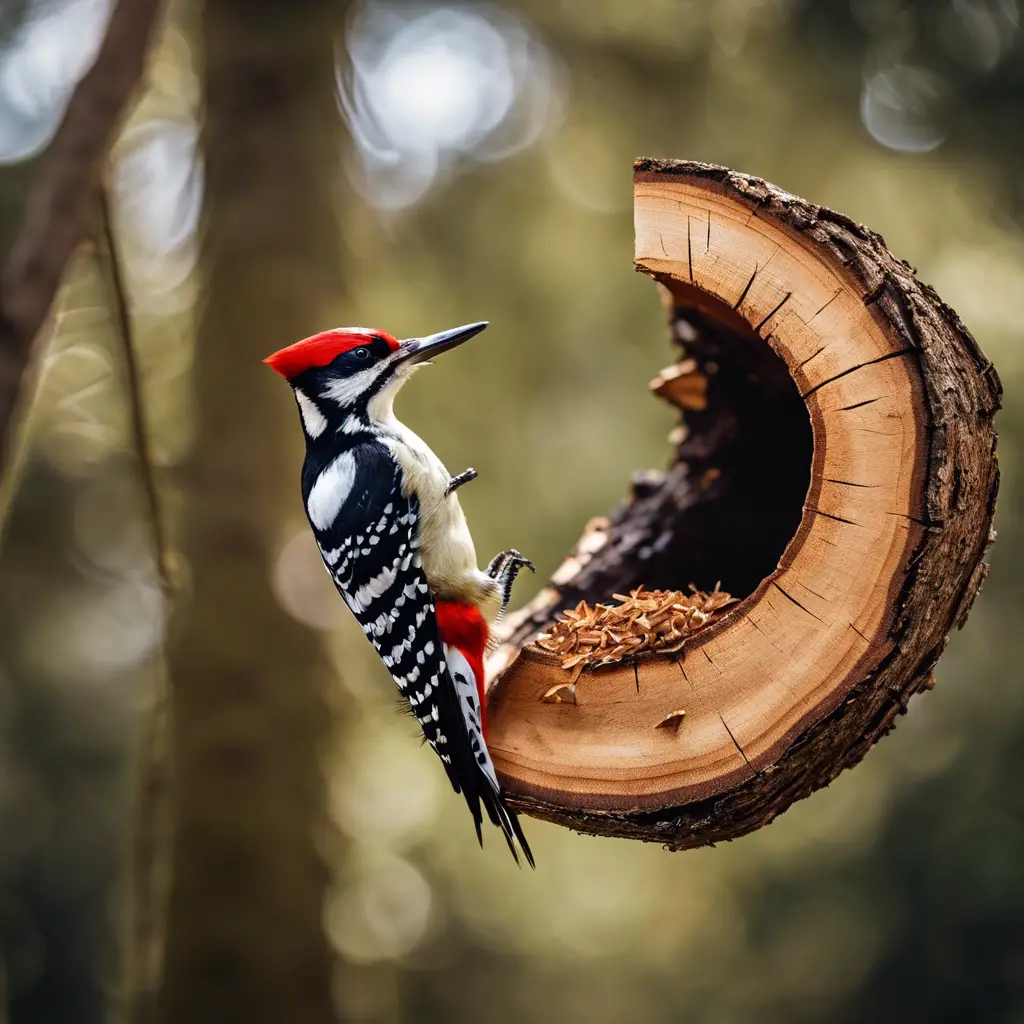Woodpeckers are a common sight in Oregon, and there are many different types of them. In this blog post, we will discuss the different types of woodpeckers that can be found in Oregon, as well as their habits and behavior. We will also provide tips on how to identify different woodpecker species. So if you’re interested in learning more about Oregon’s woodpeckers, keep reading!
The data was gathered only from credible sources and checked with an Ornithologist.
Most Common Woodpeckers of Oregon
Acorn Woodpecker
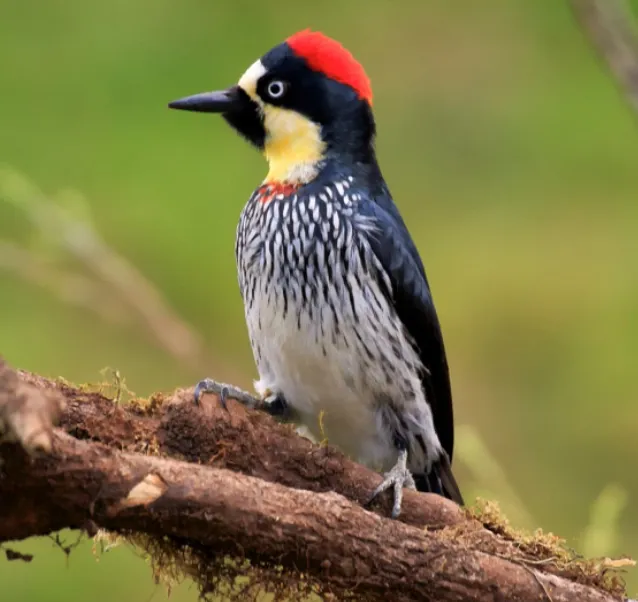
The Acorn Woodpecker is a small to medium-sized bird with a black and white striped back, black head, and white belly. They are found in open woodlands with oaks, acorns being their primary food source.
These birds are known for their behavior of drilling holes into trees to store acorns for later use.
This storing behavior often results in the death of the tree. Although they are a non-migratory species, some birds may move to lower elevations in winter. Acorn Woodpeckers are social birds that live in family groups or small flocks. Pairs will mate for life and often stay with their parents until they find their own mate.

Black-backed Woodpeckers
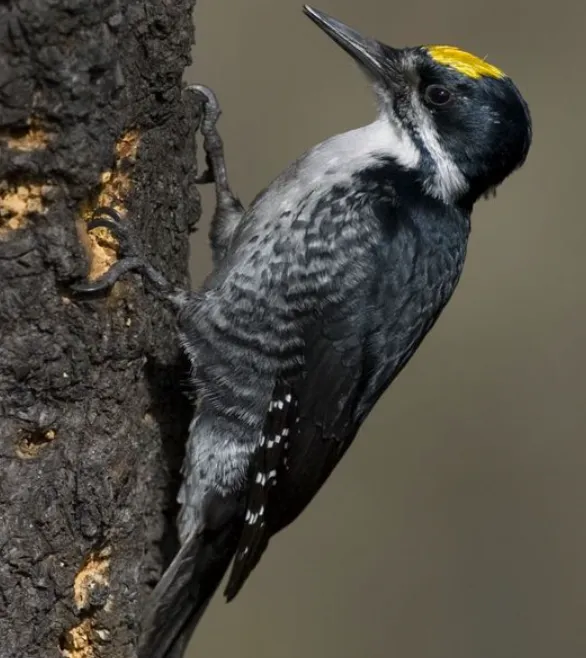
The Black-backed Woodpecker is a small, stocky woodpecker with a black back, white wings, and a white belly. They have a thick bill and long tongues which they use to drill into trees to get insects. These woodpeckers are found in forests with lots of dead trees.
Black-backed Woodpeckers are shy birds and are often hard to see. They spend most of their time high up in trees, where they build their nests. These woodpeckers sometimes excavate new nesting cavities each year.
When foraging, Black-backed Woodpeckers often hang upside down from branches while they search for food. They eat mostly insects, but they will also eat berries and nuts.
In the winter, Black-backed Woodpeckers often form small flocks. They are sometimes seen at suet feeders, where they compete with other birds for food.
Black-backed Woodpeckers are year-round residents of Oregon.

Pileated Woodpeckers
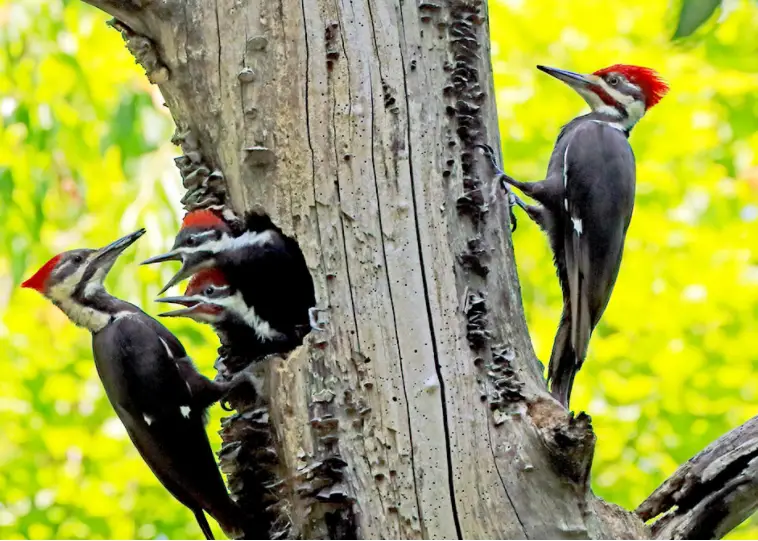
The Pileated Woodpecker is the second largest woodpecker in North America, behind the Ivory-billed Woodpecker. They are black with white stripes on their face and neck. The male has a red crest, while the female’s is black.
Both sexes have a white stripe running down their back. Pileated Woodpeckers are about 16 to 19 inches long with a wingspan of 26 to 30 inches.
Pileated Woodpeckers are found in forests throughout North America. In the west, their range extends from Alaska and British Columbia south to California and east to Montana. They are also found in the eastern United States, from Maine south to Florida and west to Texas.
Pileated Woodpeckers are most active during the day, although they may be seen feeding at night. They eat a variety of food, including insects, fruits, and nuts. Pileated Woodpeckers will also feed on the eggs and nestlings of other birds.

Hairy Woodpecker
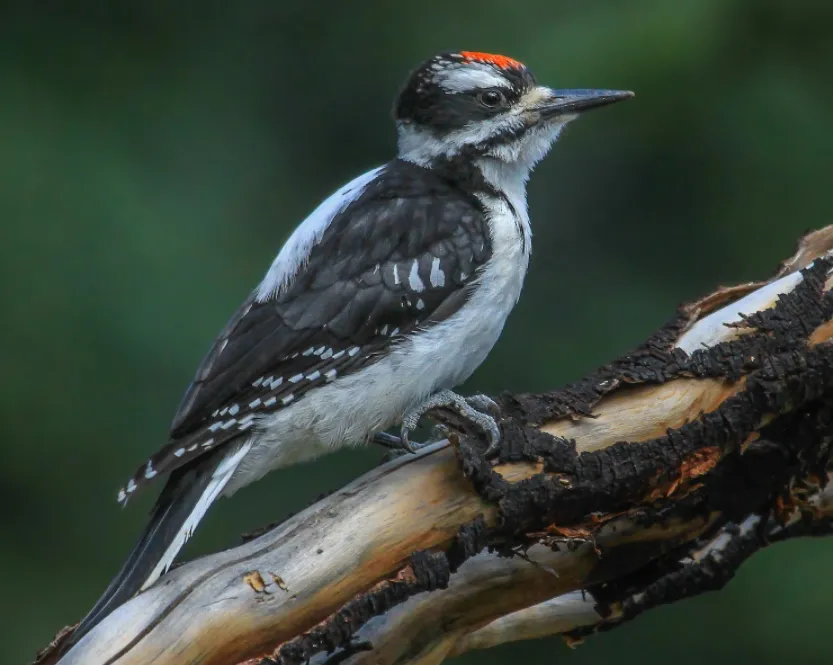
Hairy Woodpeckers are one of the larger woodpecker species in North America, and they’re also one of the most widespread. These birds are easily identified by their size, their black-and-white plumage, and their red crowns. Male and female Hairy Woodpeckers look alike, but juveniles have yellowish crowns.
Hairy Woodpeckers are found in a variety of habitats, including forests, woodlands, and even urban parks. These birds typically nest in tree cavities, and they often excavate their own nesting sites.
Hairy Woodpeckers are known for their loud calls, which sound like “pik-pik-pik.” These birds are also known for their drumming behavior, which they use to communicate with other members of their species.
If you’re lucky enough to spot a Hairy Woodpecker in the wild, you’ll likely see it searching for food on tree trunks and branches. These birds eat a variety of insects, as well as nuts and berries.
Hairy Woodpeckers are important members of their ecosystems, and they play a vital role in controlling insect populations.

Related post: Types of Woodpeckers in Utah
White-headed Woodpecker

The White-headed Woodpecker is a small to medium-sized woodpecker with a black back, white head and belly, and gray wings. This bird can be found in forests across North America, including Oregon.
The White-headed Woodpecker is most easily distinguished from other woodpeckers by its striking white head. The adult male has a completely white head, while the female has a white head with a small black patch on the back of the neck. Juvenile birds have brownish heads with heavy streaks of gray.
This woodpecker is also unique in its foraging behavior. While most woodpeckers will drill into tree bark to find insects, the White-headed Woodpecker will also peck at the ground and leaf litter in search of food. This bird is also known to eat berries and nuts.

Williamson’s Sapsucker
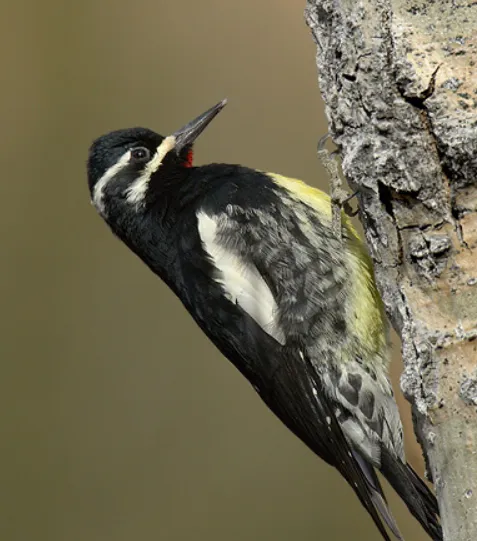
Williamson’s Sapsucker is a medium-sized woodpecker with a black back, white belly, and chestnut-brown wings. The head has a white forehead and nape, and the face is black with white stripes.
The bill is long and straight, and the legs are pink. Males have a red throat, while females have a white throat. Williamson’s Sapsuckers can be found in coniferous and deciduous forests in the western United States.
They nest in tree cavities, and their diet consists of sap, insects, fruit, and berries. Williamson’s Sapsuckers are known to drill holes in trees to get to the sap, which they then lap up with their tongues. These holes can girdle and kill trees. Williamson’s Sapsuckers are also known to eat the bark of trees, which can damage the tree.
If you see a Williamson’s Sapsucker in your yard, you can try to attract them by putting out suet or fruit. You should also be aware that these birds can carry diseases, so it’s important to clean up any sap or fruit that they leave behind.

Northern Flicker
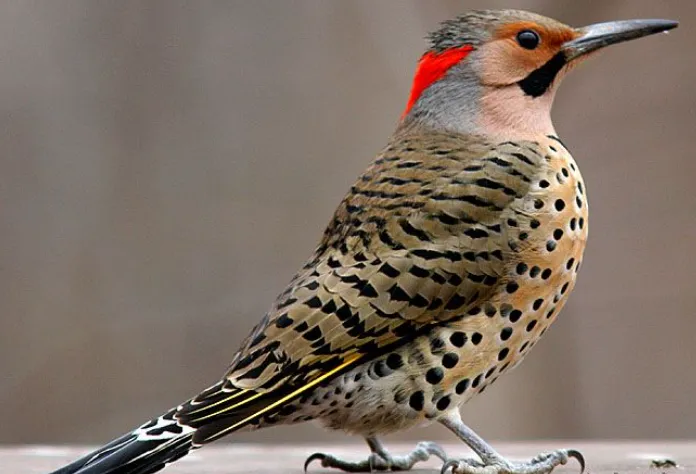
The Northern Flicker is a medium-sized bird with a long tail and pointed wings. They are brown on the back with a black bar across the wing, and their underparts are pale with black spotting.
The male has a red crescent on the back of his head, while the female has a brown cap. Both sexes have a white rump and a black tail with white bars.
Northern Flickers are very shy birds, so they are not often seen in urban areas. They prefer to live in forests and woodlands where there are plenty of trees for them to roost at night. These birds are also known to eat insects that live in the bark of trees, which is why they are often seen flicking their tails up and down while they feed.
If you see a Northern Flicker in Oregon, it is likely that the bird is migrating through the state. These birds typically migrate south in the winter and return to their breeding grounds in the spring.

Red-naped Sapsucker
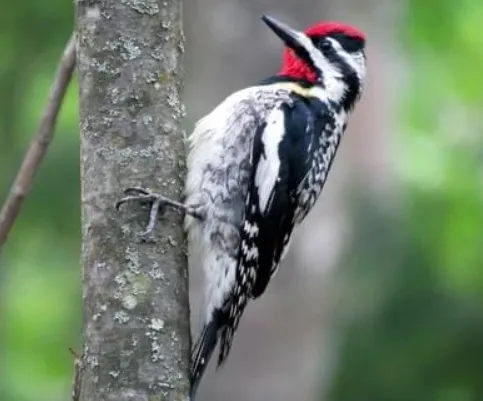
The Red-naped Sapsucker is a medium-sized woodpecker, with black and white plumage and red nape. They are found in western North America, from Alaska to Mexico.
The male has a red forehead, while the female has a brownish forehead. Both sexes have a yellow breasts with black streaks.
Red-naped Sapsuckers are known for their drilling behavior. They will drill a line of small holes in a tree, and then return to feed on the sap that flows from these holes. They also eat insects, berries, and fruits.
In Oregon, Red-naped Sapsuckers can be found in forests, woodlands, and parks. Look for them on trees with sapwells or other signs of their drilling behavior. Listen for their loud, rapid drumming.
If you see a Red-naped Sapsucker, please report it to the Oregon Department of Fish and Wildlife!
This is important because they are an indicator species of the health of our forests.

Lewis’s Woodpecker
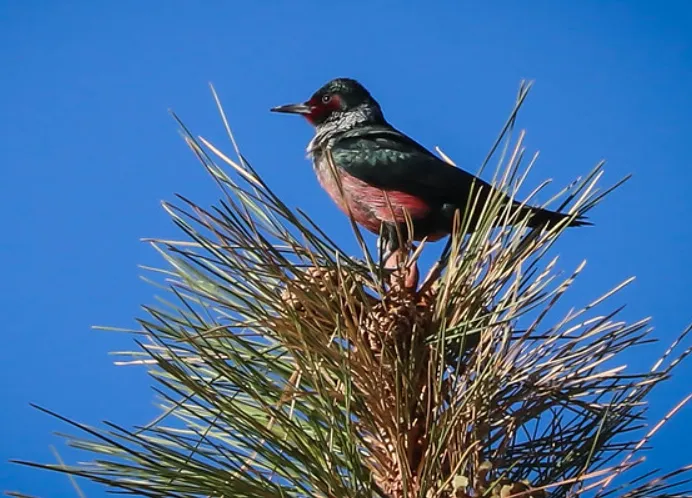
The Lewis’s Woodpecker is a medium-sized woodpecker found in western North America. The bird is black with white on the wings and tail and has a red cap on the male. It is named after Meriwether Lewis of the Lewis and Clark expedition, who first described it in 1805.
The Lewis’s Woodpecker is a cavity nester, meaning it excavates its own nesting hole in a tree. The bird also feeds on insects, fruits, and nuts.
To identify a Lewis’s Woodpecker, look for the following characteristics:
- Black body with white wings and tail
- Red cap on male
- Medium size
- Cavity nester
- Feeds on insects, fruits, and nuts
If you see a bird that matches these characteristics, it is most likely a Lewis’s Woodpecker. Keep an eye out for their behavior as well, which includes:
- Excavating nesting holes in trees
- Flying from tree to tree in search of food
- Pecking at tree bark to find insects
If you see a bird exhibiting these behaviors, it is most likely a Lewis’s Woodpecker. Now that you know what to look for, keep your eyes peeled the next time you’re out in nature!

Downy Woodpecker
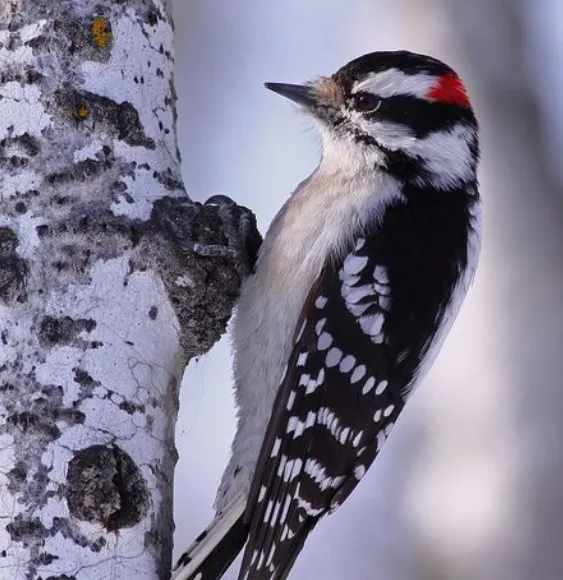
The Downy Woodpecker is the smallest woodpecker in North America and can be found in Oregon. These birds are very adaptable and can live in a variety of habitats including forests, parks, and even suburban areas.
Downy Woodpeckers have black and white plumage, with a small patch of red on the back of their head. Males and females look similar, but males often have a red spot on the back of their head that is larger than the one on females.
These birds are also known for their white wing bars and black spots on their tail feathers.
Downy Woodpeckers are very active birds, and are often seen hopping around on tree trunks and branches in search of food. These birds mainly eat insects, but they will also eat berries, nuts, and other small fruits.
Downy Woodpeckers are very good at using their long beaks to drill into tree bark in order to find food.
During the breeding season, Downy Woodpeckers are known to be quite aggressive towards other birds. Males will often chase away other males that enter their territory, and they have also been known to attack humans who come too close to their nests.
However, these birds are generally not considered to be a nuisance, and many people enjoy watching them in their natural habitat.

Red-Breasted Sapsucker
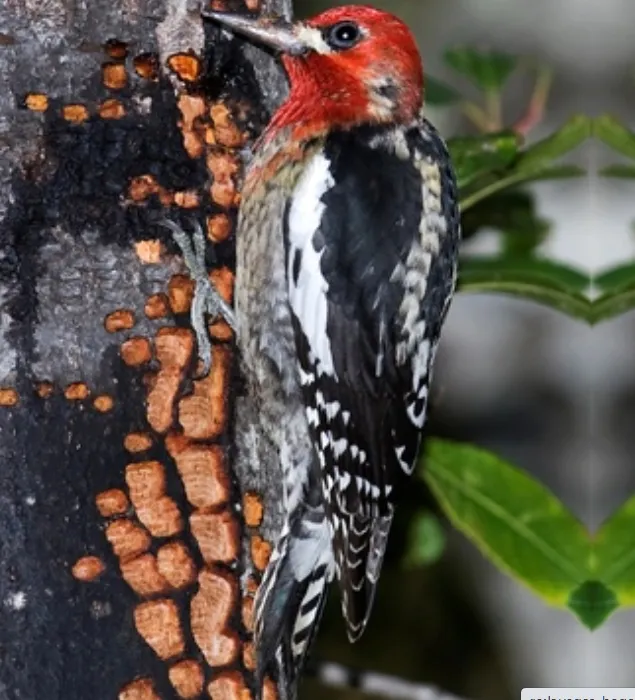
The red-breasted sapsucker is a medium-sized woodpecker with a black back, white breast, and yellow belly. They have a red throat and forehead. The adult male has a completely red head. Both sexes have white wing bars.
They are approximately seven to eight inches in length with a wingspan of thirteen to fifteen inches. The red-breasted sapsucker is the only woodpecker in North America with a complete redhead.
Red-breasted sapsuckers are found in coniferous and mixed forests across North America. In Oregon, they are most often found in the Cascade Mountains. These birds drill small holes in trees to reach the sap. They also eat insects, berries, and tree frogs.
The red-breasted sapsucker is a fairly common bird in Oregon. However, their populations have been declining in some areas due to habitat loss. If you see one of these birds, be sure to report it to the Oregon Birding Association!
Red-breasted sapsuckers are found in coniferous and mixed forests across North America. In Oregon, they are most often found in the Cascade Mountains. These birds drill small holes in trees to reach the sap. They also eat insects, berries, and tree frogs.
The red-breasted sapsucker is a fairly common bird in Oregon. However, their populations have been declining in some areas due to habitat loss. If you see one of these birds, be sure to report it to the Oregon Birding Association!

American Three-Toed Woodpecker
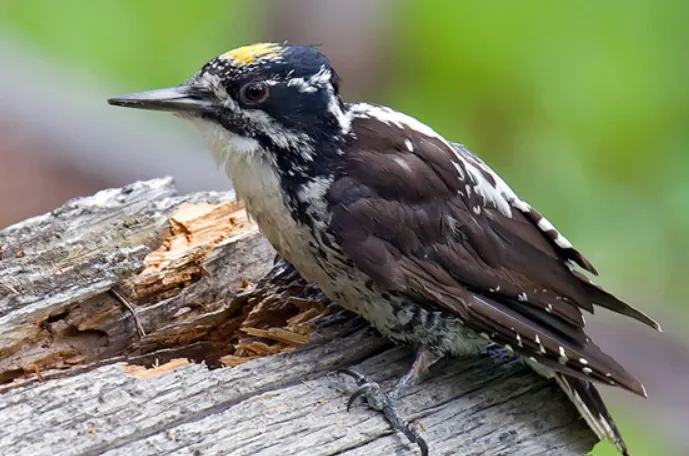
The American three-toed woodpecker (Picoides tridactylus) is a medium-sized woodpecker. The adult male has black and white plumage, with a red cap on the top of its head. The female is similar in appearance, but lacks the red cap. Both sexes have black wings with white stripes, and a white rump. The bill is black, and the legs are grey.
The American three-toed woodpecker is found in forests across North America. It prefers coniferous forests, but can also be found in deciduous forests. The bird is a year-round resident of Oregon.
The American three-toed woodpecker feeds on insects, spiders, and other small invertebrates. It also eats fruit and nuts. The bird excavates nesting cavities in trees.
The American three-toed woodpecker is not considered to be at risk of extinction. However, the bird’s populations have declined in some areas due to habitat loss.

How to attract woodpeckers?
Woodpeckers are attracted to trees that have been damaged by other birds. The holes in the tree provide the woodpecker with a place to nest and also give them access to insects. Woodpeckers will also use man-made birdhouses.
To attract woodpeckers, you can put up a birdhouse or feeder in your yard. Be sure to place the birdhouse or feeder near a tree. You can also put out suet, which is a type of bird food that woodpeckers love.
If you see a woodpecker on your property, do not chase it away! These birds are harmless and can actually be quite beneficial to have around. Woodpeckers help to control insect populations and can also be fun to watch.
What kind of woodpeckers are in Oregon?
There are two main types of woodpeckers in Oregon: the red-breasted sapsucker and the American three-toed woodpecker. Both of these birds are fairly common in Oregon and can be found in forests across the state.
The red-breasted sapsucker is a medium-sized woodpecker with a red head. The American three-toed woodpecker is also a medium-sized woodpecker, but it has a black and white plumage with a red cap on its head.
What do Oregon woodpeckers eat?
Oregon woodpeckers primarily eat insects, spiders, and other small invertebrates. They will also eat fruit and nuts. The red-breasted sapsucker is the only woodpecker in North America that drills holes in trees to reach the sap.
To attract woodpeckers to your property, you can put up a birdhouse or feeder. You can also put out suet, which is a type of bird food that woodpeckers love. If you see a woodpecker on your property, do not chase it away! These birds are harmless and can actually be quite beneficial to have around.
What do woodpeckers in Oregon look like?
There are two main types of woodpeckers in Oregon: the red-breasted sapsucker and the American three-toed woodpecker. The red-breasted sapsucker is a medium-sized woodpecker with a red head. The American three-toed woodpecker is also a medium-sized woodpecker, but it has a black and white plumage with a red cap on its head.
Both of these birds are fairly common in Oregon and can be found in forests across the state.

An avid ornithologist, zoologist and biologist with an unwavering passion for birds and wild animals.
Dr. Wilson’s journey in ornithology began in childhood and led him to obtain a Ph.D. in Ornithology from the prestigious Avian Research Institute. He has worked closely with renowned experts in the field and conducted extensive research and field studies globally.

